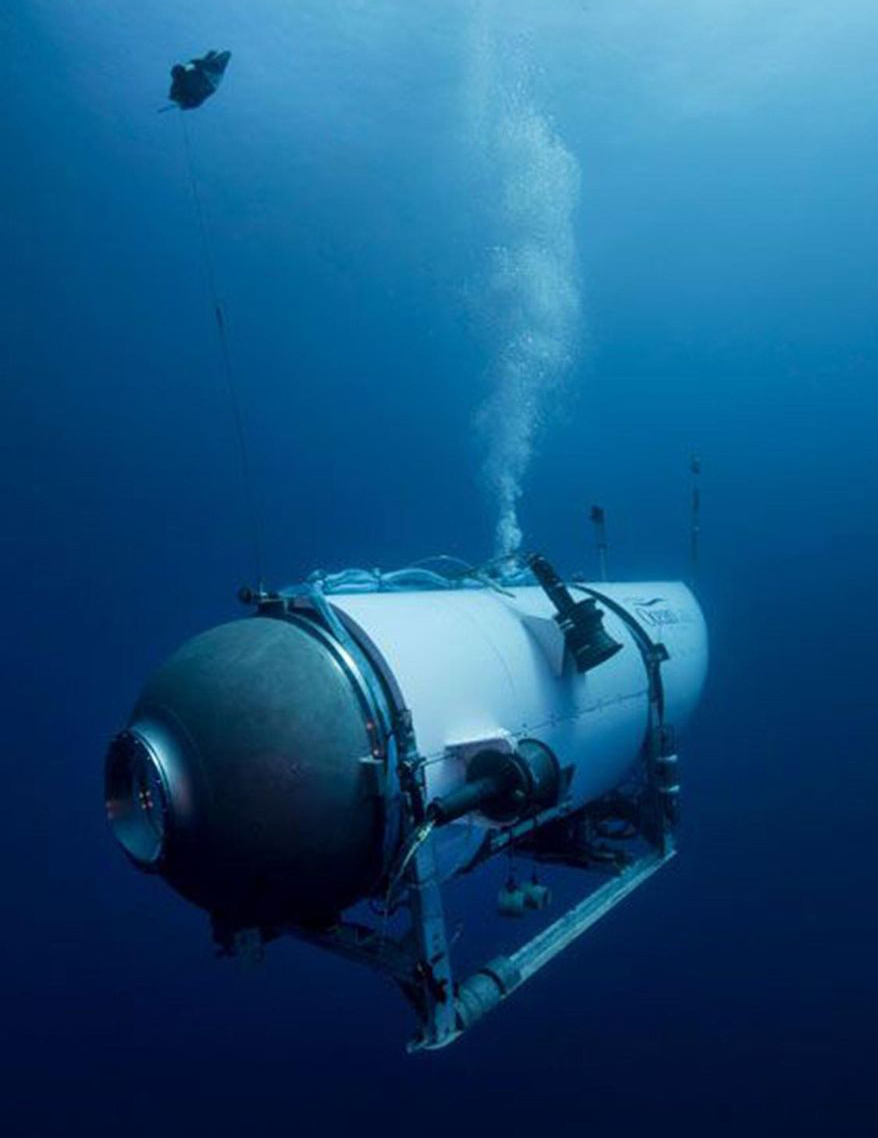Composites Scrutinized After Fatal OceanGate Failure

Implosion of Titan carbon fiber submersible raises questions about composites in undersea vessels
A debate over the pros and cons of thermoset carbon fiber composites in deep-ocean submersibles is reverberating through this specialized industry. The matter came to a head June 18, when Titan, a submersible built by OceanGate, of Everett, Wash., imploded while diving to the Titanic, killing all five onboard.
Supporters and detractors of carbon fiber composites as a structural material for undersea vessels, which are exposed to the compressive force of deep-ocean dives, have opinions about their suitability.
Supporters argue that with extensive materials testing including to failure, inspections after use and third-party certification, undersea vehicles made of carbon fiber composites are safe and reliable. Titan, in fact, made more than 24 dives to the Titanic without incident.
Composites Face Deep-Sea Dangers
Detractors say composites face daunting challenges from the enormous pressure of the deep ocean. Titanic lies at 12,500 feet (3,800 meters) where pressure is 6,000 psi (400 atmospheres). The volume of interior passenger space in manned vehicles amplifies compressive pressure. Titan was 22 feet (6.7 meters) long, 9.2 feet (2.8. meters) wide and 8.3 feet (2.5 meters) high. It had a 5-inch-thick (12.7-cm) wound carbon fiber hull and weighed 23,000 pounds (10,432 kilograms). A titanium endcap was installed on the bow and the vehicle had a Plexiglas acrylic portal.
Composites are used successfully in unmanned submersibles, such as those manufactured by Composite Energy Technologies, of Bristol, R.I. Carbon fiber composites reduce vessel weight by 30 percent on average and have proven themselves in demanding applications on land and in air and space.
Manned submersibles, in contrast, are usually made of titanium and have a 60-year record of safety after thousands of dives.
Nobody knows why Titan imploded. (On June 28, photos of the debris retrieved by a Canadian ship appeared in the news, and plans are for the wreckage to be analyzed.)
See also interview with OceanGate CEO Stockton Rush by CBS News on June 25:
Concerns About Composites Tests
Some experts maintain that OceanGate’s testing may have been flawed and say the company did not seek third-party design certification. Prior Titanic dives may have generated microcracks in the composite hull that caused the implosion, which lasted less than 40 milliseconds. Non-destructive tests like ultrasound scans could have detected cracks and other structural problems, experts add.
Stockton Rush, co-founder and CEO of OceanGate and pilot on the fatal dive, didn’t appear to take much advice from deep-sea experts about developing the Titan submersible. In 2021, however, he received U.S. patent 11,119,071 B1 covering “Systems and Methods for Curing, Testing, Validating, Rating and Monitoring the Integrity of Composite Structures.”
Observations so far are speculation, says Oleksandr Kravchenko, associate professor of mechanical and aerospace engineering at Old Dominion University, of Norfolk, Va., and technical program chair of SPE’s Composites Division.
“I’m sure composites can be used in pressurized submersible vessels,” he says, though characteristics of the materials would affect designs. Thermoset prepregs, for example, “are pretty brittle systems” that might not be the best choice for extreme levels of environmental loading and damage tolerance like those encountered by deep-ocean vessels. Such conditions could cause delamination of materials and catastrophic failure.
Would Thermoplastics Have Worked?
Kravchenko notes that for similar reasons, NASA and others are looking at using continuous thermoplastic prepregs in aircraft. “Thermoplastics have a fracture toughness 10 times greater than thermosets,” he says. Thermoplastics considered for use with carbon fiber in prepregs include high-performance resins like polyetheretherketone.
“One area where composites haven’t made a significant dent” in acceptance is marine applications, Kravchenko says. He believes the Titan disaster “may be a pivotal moment in learning to address the challenges” of this market, notably, the need for tough, fracture-resistant materials for deep-ocean vessels.
The loss of Titan should, at the very least, allow engineers and designers to evaluate the “unknowns and the knowns” of composites and the demanding applications for which designers seek to use them, he notes.
